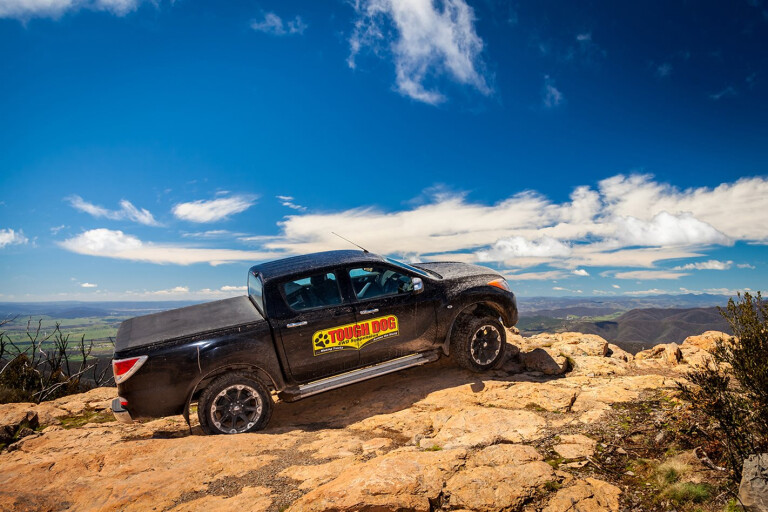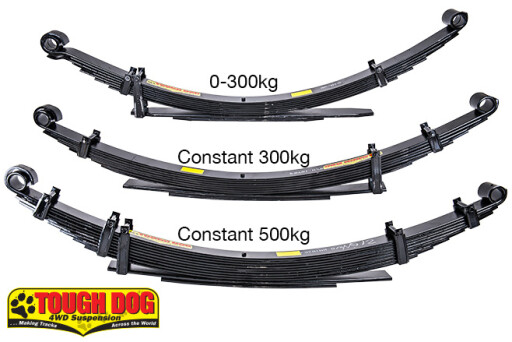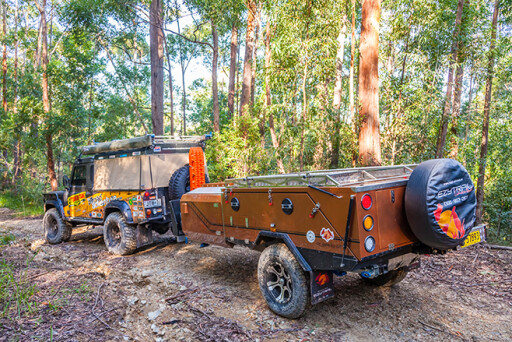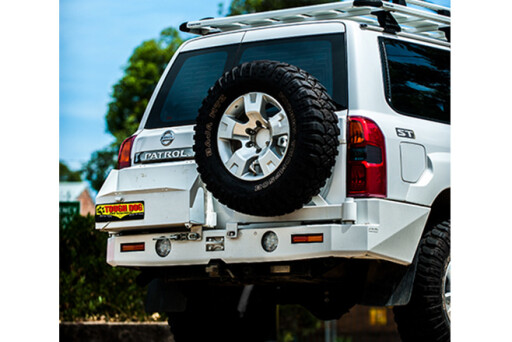
Australia has just over 800,000km of roads on the continent.
Let me say that again… eight hundred thousand kilometres of road network. Not surprisingly, the category including rural roads makes up a staggering 85% of that length! Is it any wonder then, that Australian holidays and recreational pastimes normally involve the family vehicle? The number of family cars that are 4WDs is also increasing, in fact 4x4 utilities is the only sector of the Australian new car sales market that’s growing progressively year-on-year.
Naturally, when we load up the 4x4 with the plethora of quality accessories on the market, the scales start tipping towards the point that the factory suspension just cannot cope with both the load and the punishing terrain that intrepid adventurers encounter, and that’s where a specialised suspension becomes a necessity. Tough Dog suspension normally offer a minimum of two or three spring rates for every vehicle to cope with different levels of constant load.
The key is to match the leaf spring with the load that you constantly carry, not what you’re going to be carrying. Without a doubt the cardinal sin when setting up a 4x4 is getting a little over excited and over-springing the vehicle, especially in a modern IFS (Independent Front End) style setup. The side-effects of too high a spring rate can include everything from poor ride and handling, too decreased off-road capability and premature shock wear or failure!
What is a Constant Load Spring?
 In simple terms, a constant load spring is one that will hold a constant load at a specified height. So when we say ‘constant 300kg’ we’re saying the vehicle will be 40mm above standard height, when 300kg is in the rear of the vehicle.
In simple terms, a constant load spring is one that will hold a constant load at a specified height. So when we say ‘constant 300kg’ we’re saying the vehicle will be 40mm above standard height, when 300kg is in the rear of the vehicle.
When the original equipment suspension is designed, they’re trying to make a spring that fulfils the needs of an empty family vehicle that only ever sees the occasional load in the rear, right through fully loaded tradesman’s work platform or touring vehicle, and everything in between.
The simple fact is there is no way to make one single spring perform well in all those circumstances, and that’s where aftermarket manufacturers step in.
When a Constant load spring is fitted without the load, effectively you’re lifting the vehicle too high. The result of that is that the shock’s resting position is nearly fully extended position, which means little to no down travel and the shock constantly running out of travel on and off-road which can lead to bush wear and shock failure.
The Heavy Duty Misconception
“I need a heavy duty [insert accessory here] …” It seems to be the catch cry of this industry, heard from consumers and manufacturers alike. The term heavy duty has been thrown around so loosely, and so frequently, that the only thing that is ‘heavy duty’ about it is wading through the marketing jargon that goes with it! Tough Dog springs are made of the best quality material, with all the spring friction pads, keepers and every other trimming you could possibly want, Heavy Duty and Heavy Load Carrying are worlds apart, and should never be confused.
Choosing the Right Spring
1: “Most of the time the vehicle is empty, but I do load it up when we go away”
This is the classic heavy duty vs. heavy load scenario. And in this case, the vehicle needs to be fitted with a 0-300kg spring that will provide a smooth ride, without compromising the manufacturer’s load carrying intentions. Remember, even the lightest aftermarket spring is 10-15% higher in rate than the factory spring.
2: “I’m always towing a heavy trailer, whether it’s a boat or a camper trailer”
 As much as we’d love to be towing the boat every day… we do have to come back to the reality of coming back to work. The key to setting up a tow car is to ensure that the drawbar of the trailer and the vehicle are sitting level when everything is hooked up, this will ensure that the trailer tracks well behind the tow car, and doesn’t buck and carry on when you hit a bump. Setting that up is a balancing act between lifting the rear, and not lifting the front too much. In some cases, the best bet here is not to go harder in the rear, but to soften up the spring in the front.
As much as we’d love to be towing the boat every day… we do have to come back to the reality of coming back to work. The key to setting up a tow car is to ensure that the drawbar of the trailer and the vehicle are sitting level when everything is hooked up, this will ensure that the trailer tracks well behind the tow car, and doesn’t buck and carry on when you hit a bump. Setting that up is a balancing act between lifting the rear, and not lifting the front too much. In some cases, the best bet here is not to go harder in the rear, but to soften up the spring in the front.
3: We’ve fitted a drawer system, a steel rear bar and a roof top tent.”
 This is the perfect time to reach for the constant load spring. Once we’ve worked out the total weight of the accessories, we can select the coil that suits. Things like this aren’t going to be removed from the vehicle any time soon!
This is the perfect time to reach for the constant load spring. Once we’ve worked out the total weight of the accessories, we can select the coil that suits. Things like this aren’t going to be removed from the vehicle any time soon!
Don’t forget the shocks!
When we increase the rate of the spring, the amount of energy that the shock needs to be able to control is far higher than normal. The point of the shock absorber is to control the reaction of the spring after hitting a bump, and dissipate the energy that the spring puts out. If the vehicle tends to bounce after an impact, then chances are your shock needs to be stronger in its valving. Vehicles where the load changes from heavy to soft will often benefit from an adjustable shock where the user can select the valving firmness to match the conditions.
BUILD & BUY ONLINE
Tough Dog Suspension’s website has a new feature called Build & Buy Online, which allows you to select the right suspension for your vehicle, and have it delivered to your nearest dealer for collection. You can also arrange to have the dealer fit the suspension if you prefer. To see what complete options Tough Dog have for your vehicle, check it out at www.toughdog.com.au

COMMENTS